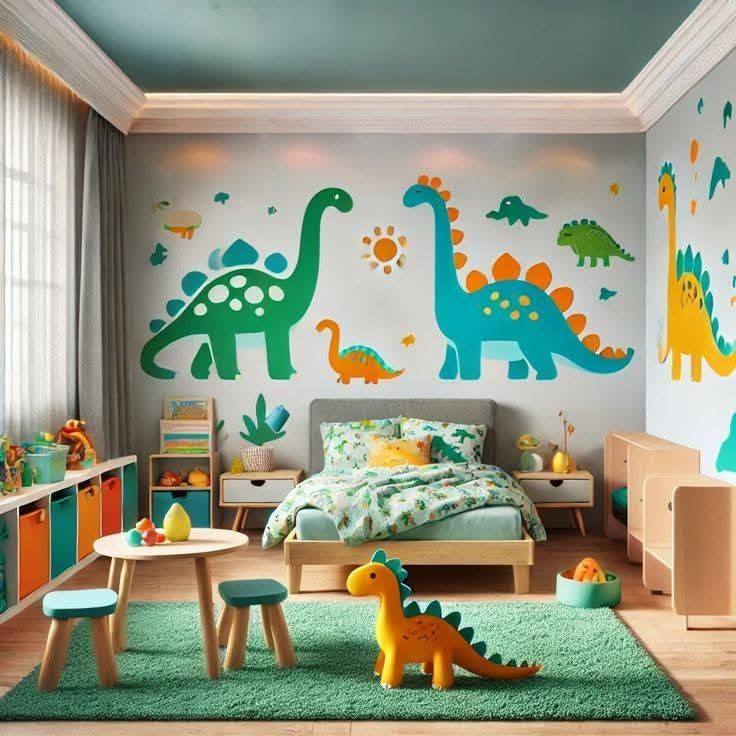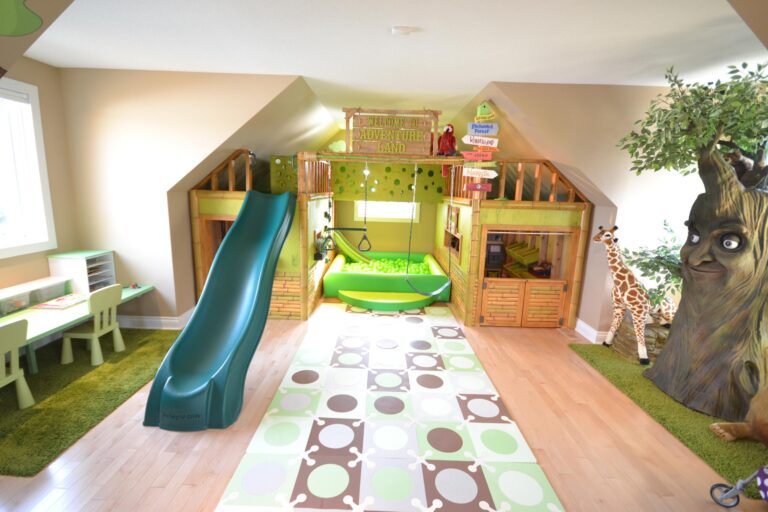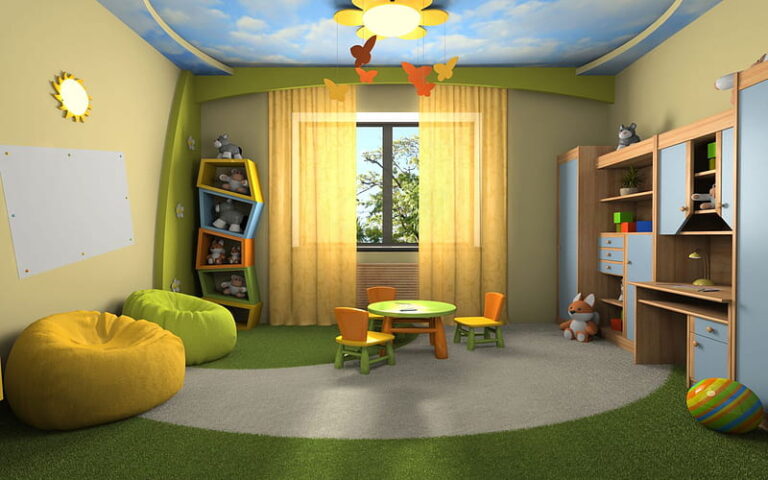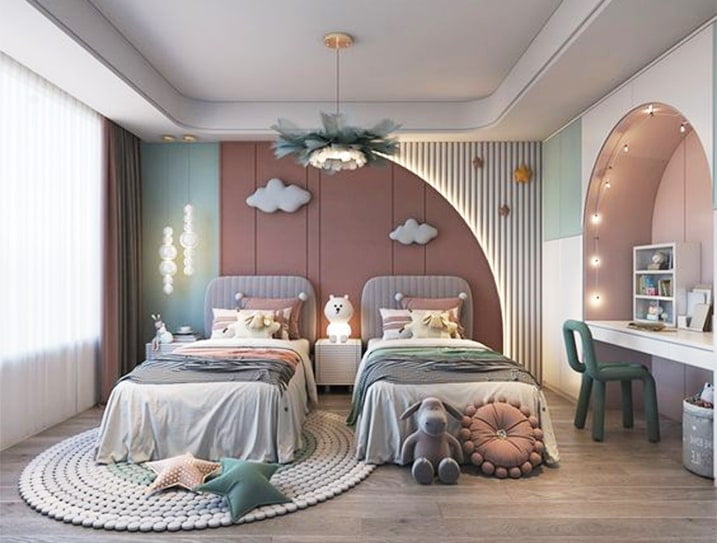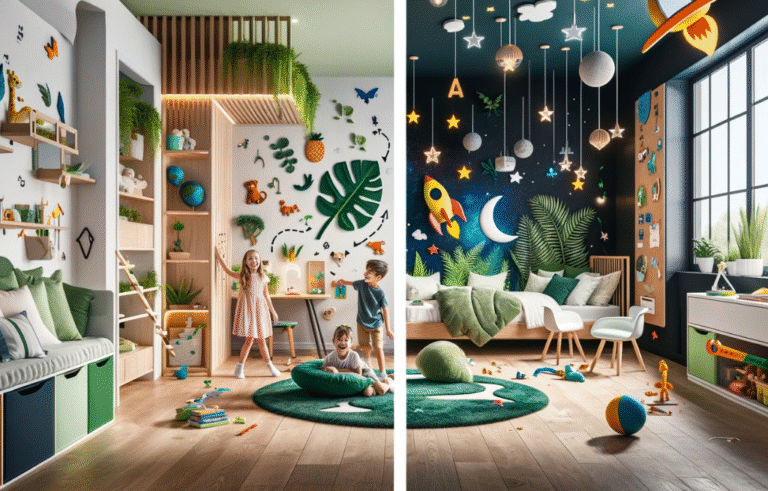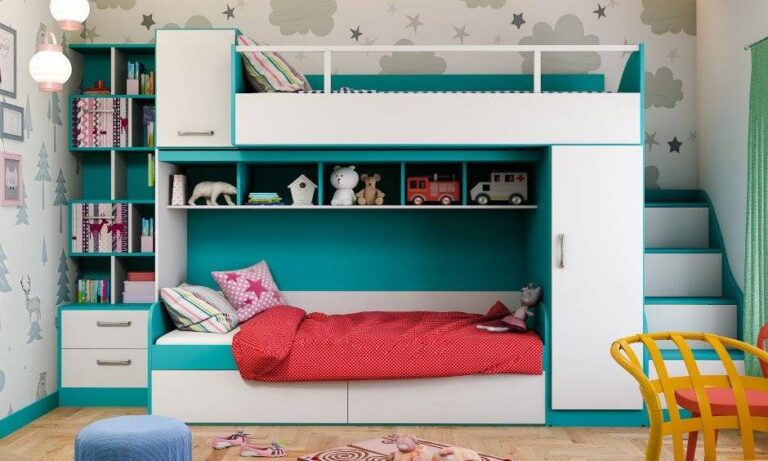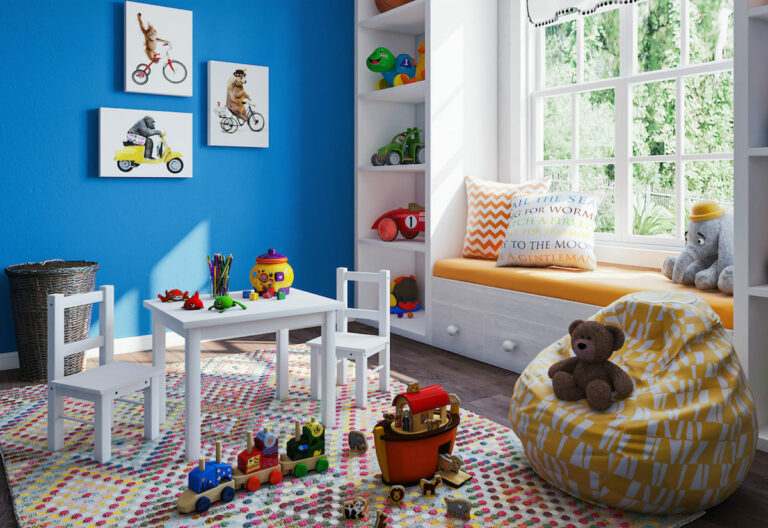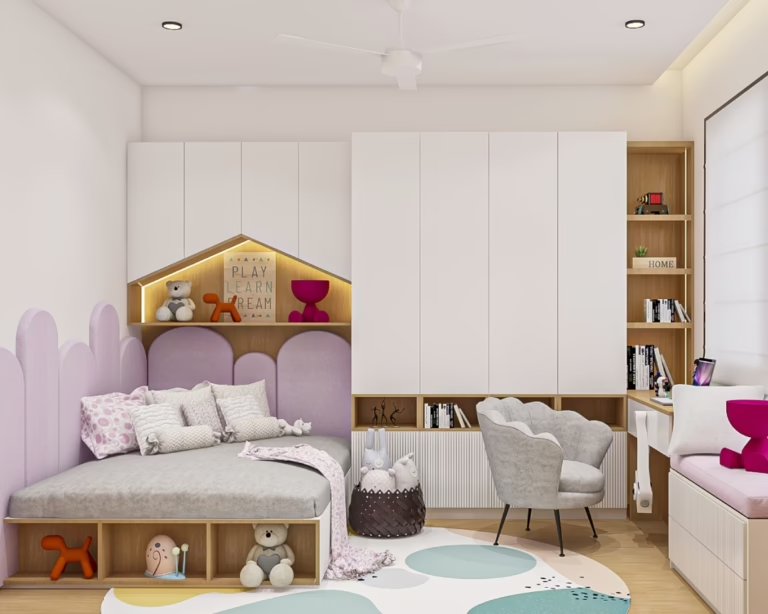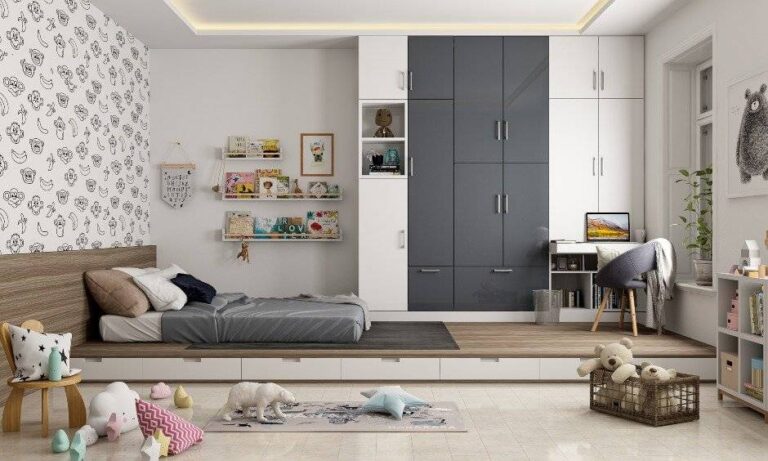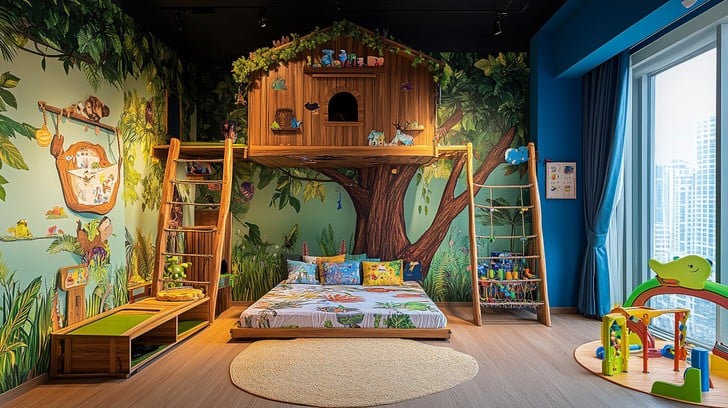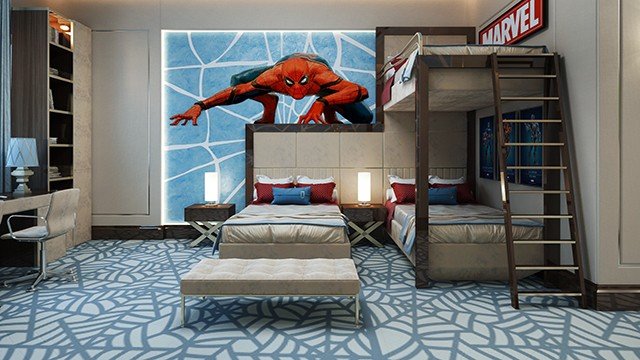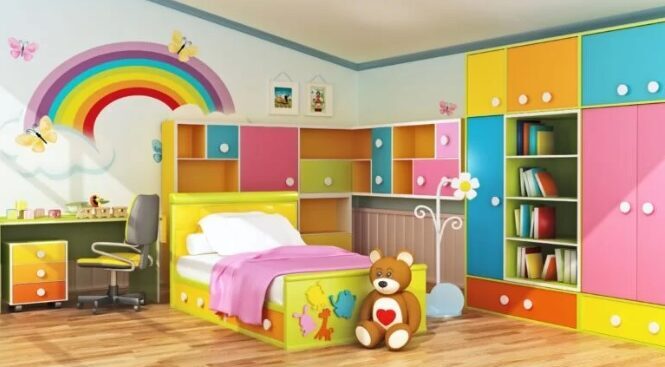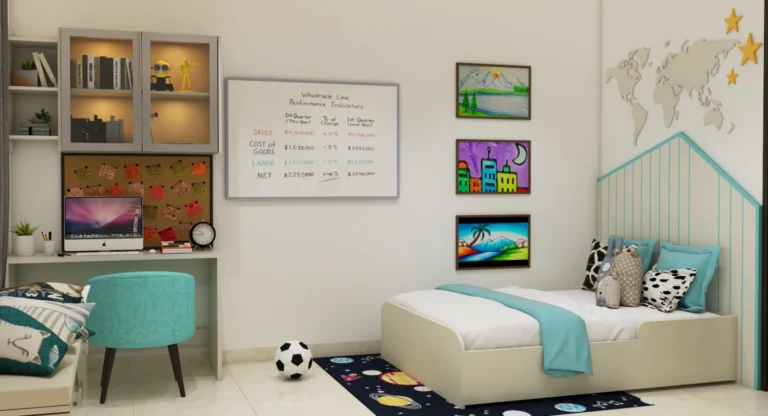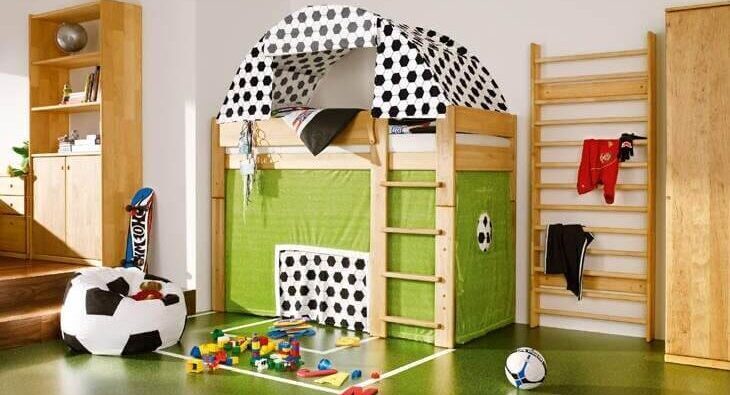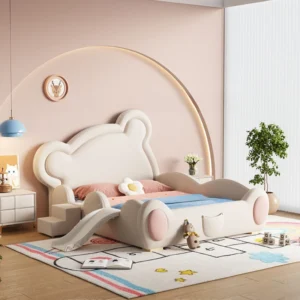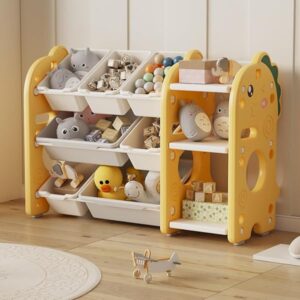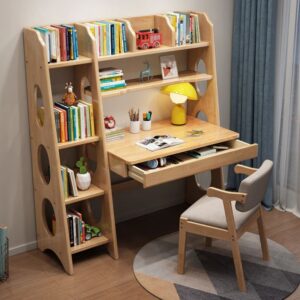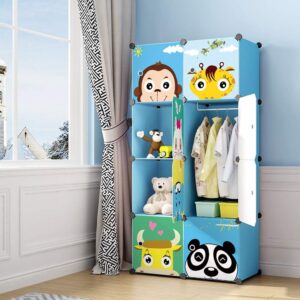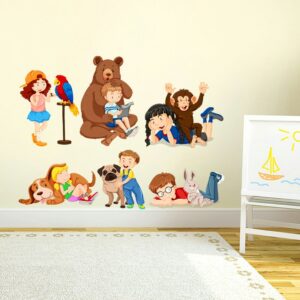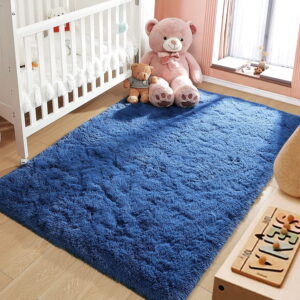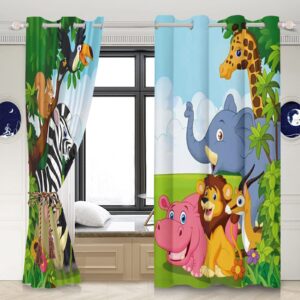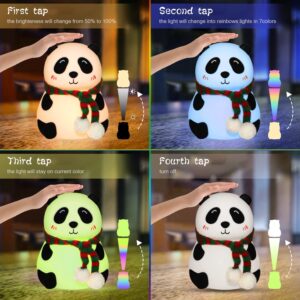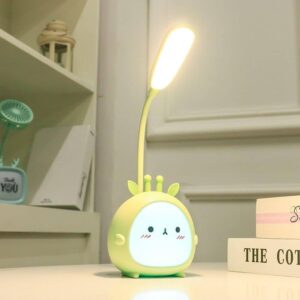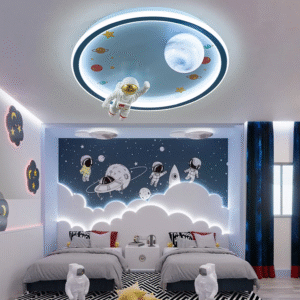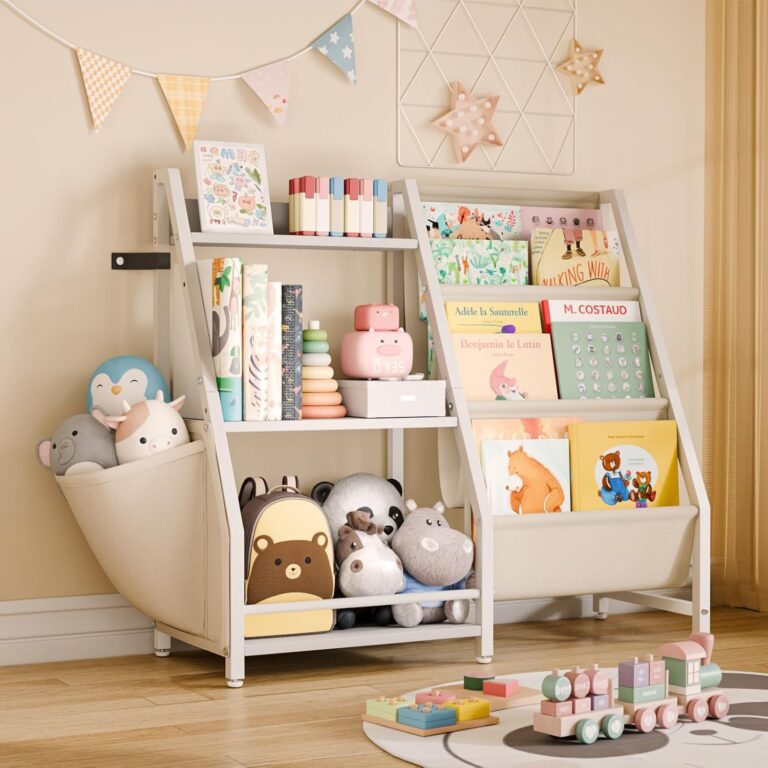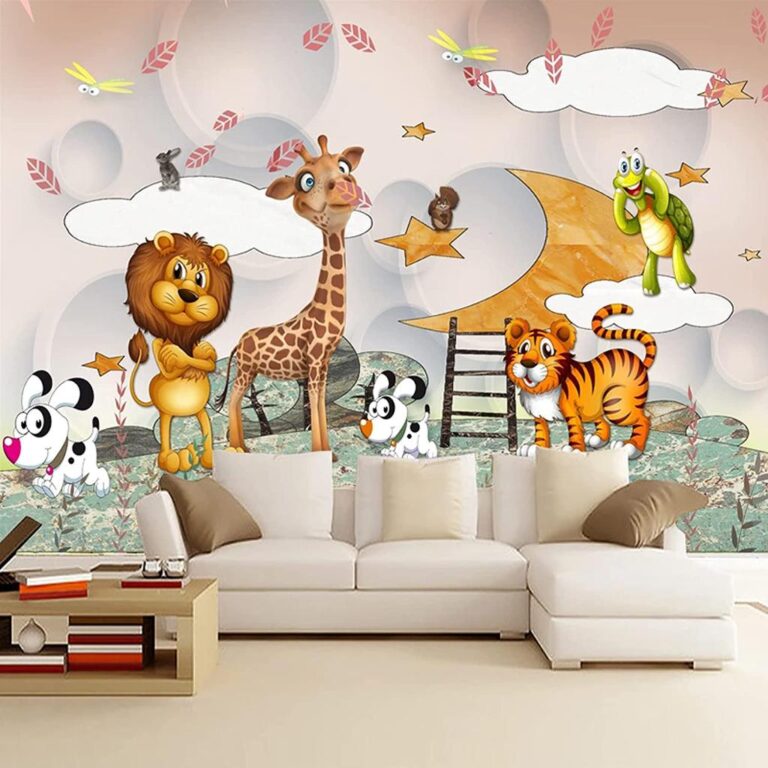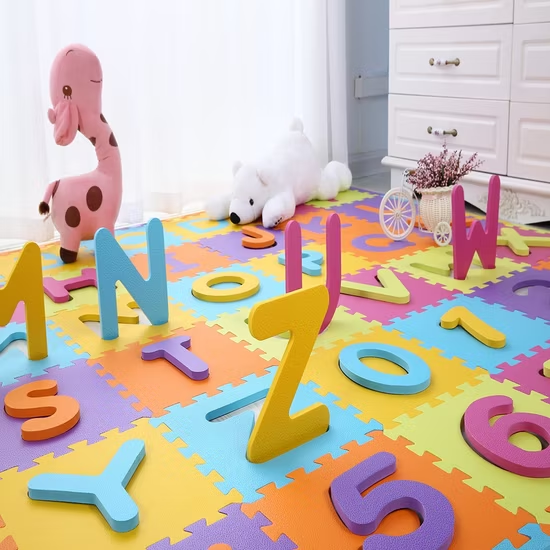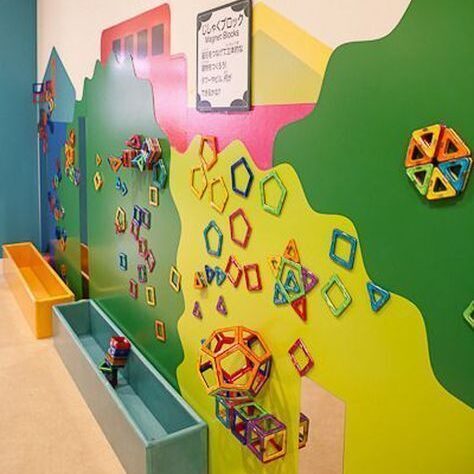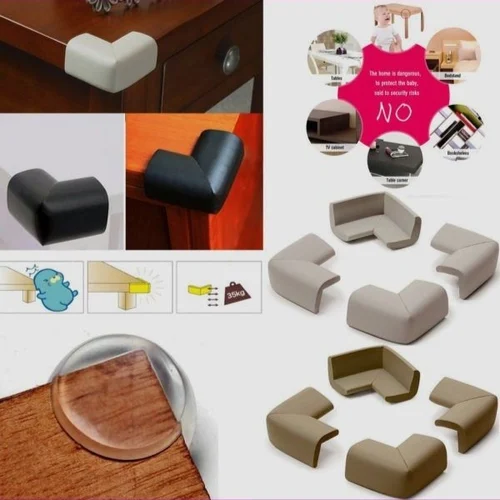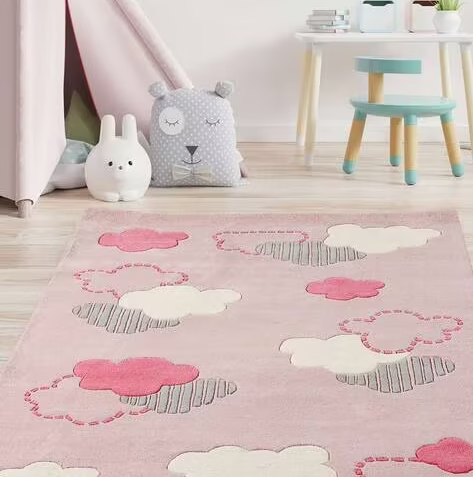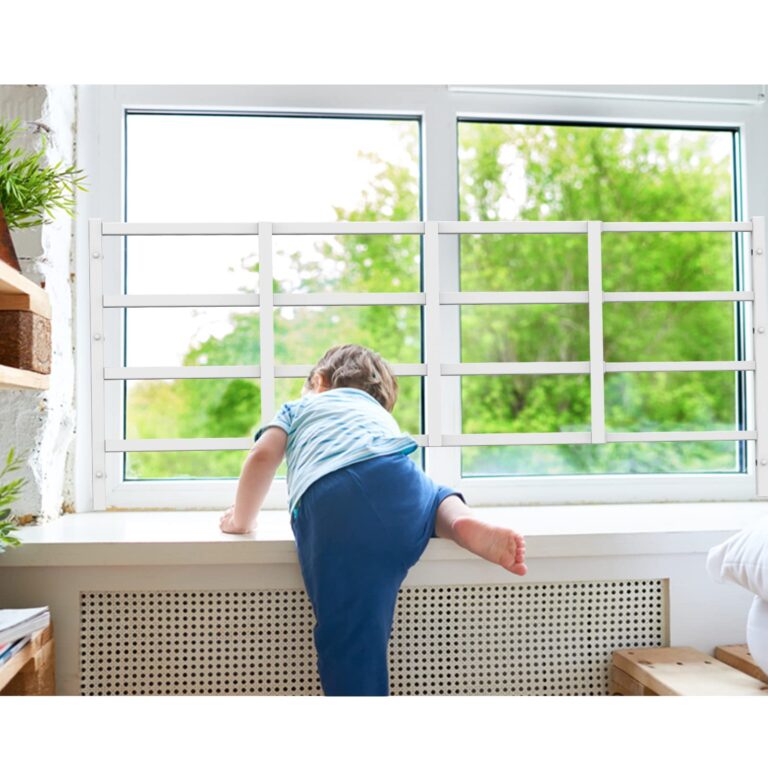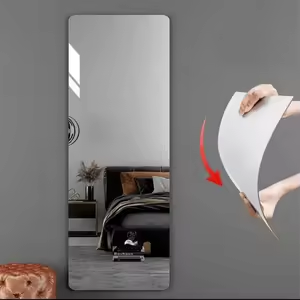Interior Designs For Kids Room
1. Choose a Theme or Style
When you are choosing a theme for a child’s room, see beyond traditional cartoons or ongoing trends – apart from that, use themes that evolve with their curiosity. Imagine a room themed of “Discovery and Wonder,” where each wall subtly shows an element – Earth by (plants and textures), Air by (sky murals), Water by (shimmering blues), and Fire by (warm cozy lighting). Such elemental styling lets the child remain connected without growing out of the decor too quick.
Alternate, opt for blending two worlds – a room that is both an imaginative playground and a learning hub. For example, pair a simple woodland aesthetic with astronomy. This advanced approach makes the room more colourful, providing multiple dimensions of play and learning without immersing the visual consonance.
- Adventure – Forest, Universe, Deepwater
- Fantasy – Queen, SuperHeroes, Angels
- Modern – Minimal soft colors and mathematical patterns
- Educational – World maps, alphabet walls, science corner, country map
- Sports – Football, Cricket, Swimming, basketball, badminton hockey
2. Color Palette
Instead of just painting the wall, use color as an emotional language. Take the colourful zoning as a calming color where the child feels like pale teal or muted lavender, connected with energizing concepts (sunny yellows, playful corals) where activity happens. Such zoning reactively guides the child through different parts of their room, helping to establish rhythms and habits.
Also explore interactive color surfaces as well- one wall finished with magnetic or chalkboard paint in soft grey or forest green, allowing creativity to flow without limitations of wallpaper. This way, the color becomes a living canvas that surround with the child’s interests and ideas
- Soft pastels – for calmness: mint green, baby blue, blush pink.
- Bold bright colors – for vibe: yellow, orange, red concept.
- Accent walls – One wall with murals or wallpaper for a traditional look.
3. Furniture
Consider modularity and multisensory design while purchasing. Rather than a static bed, choose a convertible “Cocoon Pod” a low-height, rounded-edge bed frame that converts into a reading nook or play tent as the child grows up. Modular furniture pieces like stackable cubes or fold-away desks allow kids to adapt their space as their needs change, promoting a sense of ownership toward their belongings.
Go beyond storage boxes – purchase storage as a “Treasure Map” system. Each drawer or shelf can be colored or labeled with funny symbols (pirate chest, starlight chest, explorer’s drawer) or emojis, turning cleaning into a game rather than a task. This will not only build routine but also engraved a sense of narrative in everything they do in daily life.
- Bed – Fun shapes (car bed, princess bed, king bed), bunk beds for siblings
- Storage – Low height cabinets, colorful toy boxes, open shelves colored and engraved with emoji
- Study Table – Designed chair and table, enough space for books and crafts to be placed
- Wardrobe – kids friendly handles, mirrors at kid’s height and safety features
4. Decor and Accessories
While still being tactile and captivating, decor should evoke the imagination. A section with specific yet different textures (velvet, cork, felt), overwhelming lighting like touch-based panels that glow, or artistic mobiles hanging from the ceiling that create movement and attraction.These sensory components gently support motor and cognitive development and help the brain of the kid to grow faster.
Introduce rotating art galleries as an alternative to posters for wall art. Install simple wooden ledges where children can proudly display their own art and feel joyful, rotating it every month which will help them to perform well. This cultivates creativity and gives the room a personal story that is always evolving, which boosts self-esteem and creative confidence and helps the child to be smart.
- Wall Art – Framed drawings, wall decals, glow-in-the-dark stars glowing cartoon stickers
- Rugs – Different shapes and soft textures of different sizes
- Curtains – Themes prints on wallpaper (cartoons, stars, animals)
- Lights – Night soft lamps, pendant lights, string lights for magic, table lamp, glowing lamp
- Ceiling – Create clouds, stars, or even hanging decor and some artificial craft
5. Play Area
Play areas should be “fluid play” spaces that can evolve between activities. Instead of creating a tent or ball pit, create a “Transforming Zone” with modular floor cushions and collapsible structures. One day it’s a castle, the next day it is a spaceship, another day it is a library fort. Adaptable playing areas prevent feeling fatigue and keep children engaged longer in game.
Bring a kinetic play indoors with a swing chair, a mini -beam produced in floor casting, or a climbing rope attached to a roof corner. These provide dynamic physical outlets, especially unique in urban settings where outdoor space might be limited and kids don’t get enough play time.
- Soft floor mats that prevent any injury
- Tent or tepee corner temporary created
- Small soft chalkboard/whiteboard wall to help creating craft
- Indoor slides (if space allows) allow kids to increase physical activity.
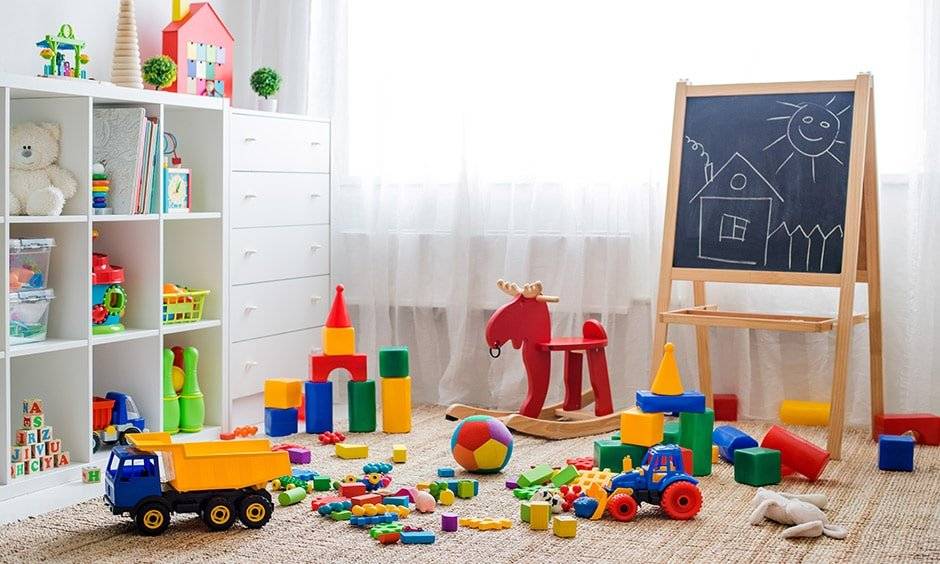
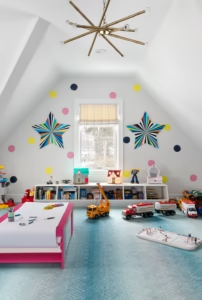
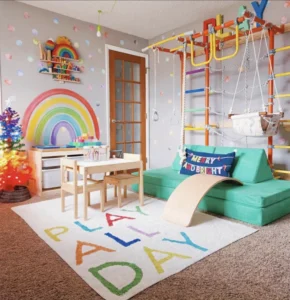
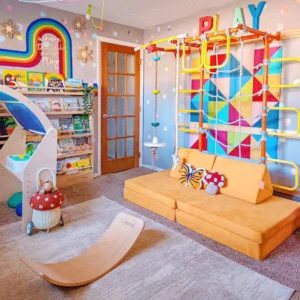
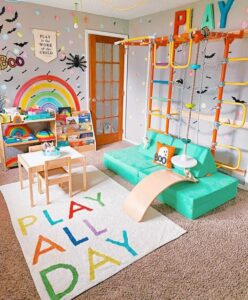
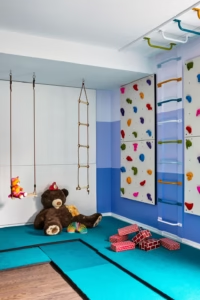
6. Learning and Creativity Corners
Instead of using a stable take a look at table, you create gaining knowledge of corners that act as exploration stations. Use layered vertical cabinets that permit children to “discover” books, technology kits or puzzles in place of visually outside in Almira. In order to consciousness at the work on the paintings reachable and female interest, the lighting fixtures on this location ought to be corrected and adjusted.
Include analog exploration tool A-mounted cork to join the absence of an old poem (magazines, postcards, maps), an old school or to connect to the wall in a magnetic poem. By providing touch and interactive options, you encourage learning outside the screen and more unstable, self – controlled thinking.
- Bookshelves within their reach so that they can get access
- Art station with crayons, paints, paper, wallpaper, cartoon
- Interactive walls with magnetic boards or pegboards or chalkboard
- Educational toys displayed openly and softer in hardness
7. Safety Tips
Thinking about safety is not like a limit, but as an invisible layout layer. Use materials which include rounded wall panels that no longer best add coloration and sounds, however also act as gentle buffers with regards to bumps. Similarly, as opposed to dull stab covers, “unstable animal -shaped covers or thematic decals that educate children” those outside the boundaries “visually and simply.
Opt-adjustable drawers for modern safety solutions that develop with the energy of the child, or set in top-particular bloodless garage with locking mechanisms for a few tiers. This creates an environment that develops in safety due to the fact the kid’s dynamics and interest increase, which reduces each chance and frustration.
- Rounded edges on furniture to save from any injury
- Anti-skid rugs
- Window guards to save from glass injury
- No sharp decorative items with softness in material
- Non-breakable mirror options to prevent from any serious mishappening
8. Space Planning
Instead of static areas, plan with a “drift map” mentality – map a course that the kid can walk, play and may explore the whole room. Make sure energetic sports activities courts do now not block natural roads to study or loosen up. Keep the middle of the room flexible and open, use shifting portions so that the room itself can be configured by way of the kid himself.
For age scaling, use layouts yellow furniture systems, wall-established furniture that can change the peak, and ornament factors that could infect more mature aesthetics over time. It prevents the overhaul of a highly-priced space and offers the child a sense of growing continuity and authority.
- Enough open space for free movement
- Modular furniture as the child grows
- Vertical storage to save floor space
- Future flexibility (changing themes, growing needs, using different wallpapers)
